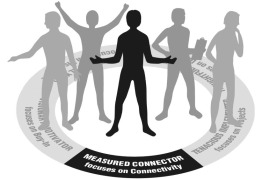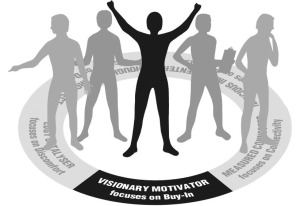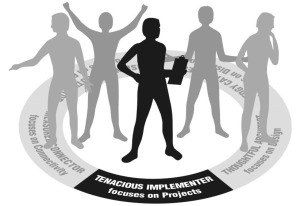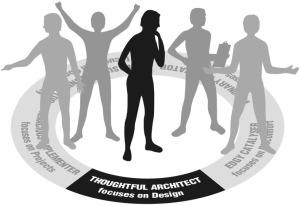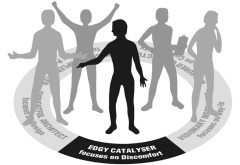This blog was triggered by a question that David Gaster posed on one of the LinkedIn forums on change management that we’re both members of. It was concerned with change success and failure rates:
“have you seen any break-downs for internally led changes as opposed to Consultant led?”
My answer was “no”, I hadn’t seen any, I did mention that with the generally accepted success rates I tend to quote that 70 – 80% of change efforts fail … but then go on to reframe by saying 70 – 80% of change efforts fail to meet 100% of their original objectives. Which makes a lot more sense I think. And I guess we’re talking more about planned change where there is a clear set of measurable objectives upfront unlike more emergent change.
But the question did get me thinking about the question and the different reasons that organisations use internal and external change agents. Indeed I have written something about this in the latest edition of our book Making Sense of Change Management:
“Some organizations rely on outside help whilst others believe that they have the change agency capacity in-house. Although the core competencies of internal and external change agents are similar it is worth considering some of the differences between the two, partly so one can consider what may be best for any particular change situation, and partly so that the change agent can understand some of the nuances.”
Lacey (1995) identifies some of these different factors:
|
Consulting process
|
Internal Change Agent
|
External Change Agent
|
| Entry |
Ready access to clientsReady relationships
Knows company jargon
Understands root causes
Time efficient
Congenial phase
Obligated to work with everyone
Steady pay |
Source [find] clientsBuild relationships
Learn company jargon
“presenting problem” challenge
Time consuming
Stressful phase
Select client/project according to own criteria
Unpredictable outcome |
| Contracting |
Informal agreementsMust complete projects assigned
No out of pocket expenses
Information can be open or confidential
Risk of client retaliation and loss of job at stake
Acts as third party (on behalf of client), or pair of hands |
Formal documentsCan terminate project at will
Guard against out of pocket expenses
Information confidential
Loss of contract at stake
Maintain third party role
|
| Diagnosing |
Has relationship with many organization membersPrestige determined by job rank and client stature
Sustain reputation as trustworthy over time
Data openly shared can reduce political intrigue |
Meet most organization members for the first timePrestige from being external
Build trust quickly
Confidential data can increase political sensitivities
|
| Intervening |
Insist on valid information, and internal commitment; free and informed choice – people can choose to participate or not – is a luxuryRun interference for client across organizational lines to align support [“allowed” to engage with other parties of the organization if need be] |
Insist on valid information, free and informed choice, and internal commitmentConfine activities within boundaries of client organization |
| Evaluating |
Rely on repeat business, pay rise, and promotion as key measures of successCan see change become institutionalized
Little recognition for job well done |
Rely on repeat business and customer referral as key measures of project successSeldom see long-term results |
We can see that throughout the course of the assignment both internal and external consultants will have challenges but often of a different nature. And of course how well the change agents address these challenges will determine how successful or otherwise they may be.
Huffington et al (1997) building on the work of Basset & Brunning (1994) suggest some criteria for when internal and external consultants may be indicated for a particular project:
Internal change agents when there is a need to work longer term with the outcomes of the change; when there is an internal driver to use or rely upon internal capacity or capability; when internal knowledge of the system now and into the future is required; when engagement with the wider groupings will be improved with internal change agents; and when there is a belief that ownership should clearly be internal.
External change agents when there is the need for a major organizational-wide change especially when there is high level senior management involvement or sponsorship; when the changes are of a complex nature with limited capacity or capability within; when there is a need for an external, more objective, perspective; and when the situation requires an intervention by people with no conflicts of interest, loyalty or prejudice.
Once again the suggestion is that internal and external change agents are chosen for different reasons and are and therefore will have different criteria of success. 
My own experience in being both an internal and external change agent and observing many others over the years is that on a good day, on a good project, the internal change agent wants to deliver an excellent long lasting outcome for the organisation and, as a by-product, be recognised for such. On a bad day they just want to survive and limit the damage to their reputations.
Likewise for external consultants, on a good day striving for a win-win-win where the client, the consultancy and the individual all benefit from a job well done. On a bad day, damage limitation and the hope of an onward recommendation nonetheless?
A useful reflection before commissioning consultants and for them before accepting the job:
- List the pros and cons for using internal or external change agents for the particular change intervention you have in mind;
- What are the implications for the organisation?; and
- What are the key questions for the change agent?
References
Basset, T and Brunning, H (1994) The ins and outs of consultancy, The Journal of Practice and Staff Development, 4 (1)
Huffington, C, Cole, C and Brunning, H (1997) A Manual of Organizational Development: The Psychology of Change; London, Karnac Books
Lacey, M (1995) Internal consulting: Perspectives on the process of planned change Journal of Organizational Change Management. Bradford: 1995. Vol. 8, Iss. 3
